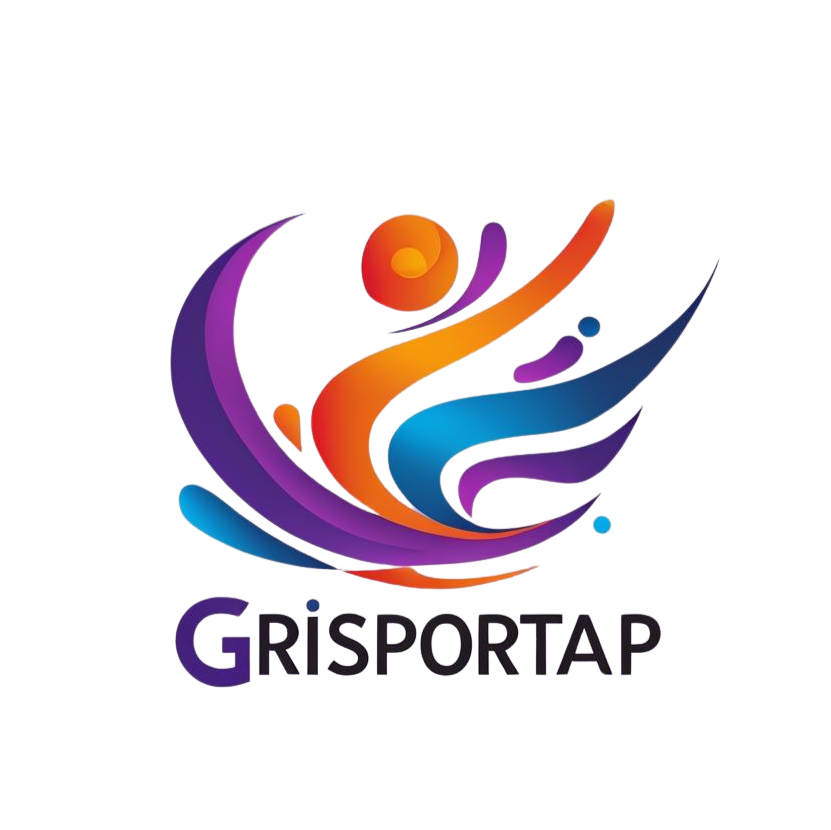Marketing strategies still shape how people find and buy today, but are you sure your plan matches how consumers actually behave in 2025?
You’ll learn why an integrated, data-informed approach matters now. In 2025, AI personalization, video and social shifts, omnichannel touchpoints, and AR/VR pick up speed. Use simple workflows to test ideas, measure results, and iterate responsibly.
Think of this as a practical playbook that links content, channels, and goals so every campaign supports your brand and business. You’ll get tool-focused examples that show how to prioritize based on the data you already have, not on hype.
This introduction sets a clear, actionable tone: define goals, pick channels with intent, design small tests, and close the loop with reporting. Expect real examples and ethical choices that create lasting value beyond short-term sales.
Introduction: Marketing strategies for a faster, smarter 2025
A joined-up approach helps you move quickly while keeping every campaign tied to real outcomes. This section shows why connecting goals, channels, and measurement beats one-off work.
Why integrated planning wins
Why integrated strategy beats one-off campaigns
Integrated planning keeps your marketing strategy aligned so each tactic supports shared goals and a clear audience promise.
When content, paid media, and email work together, engagement and ROI often rise faster than isolated campaigns.
How this guide helps you pick tools, channels, and examples
This guide helps you match tools to jobs: content systems, social media, media marketing, email marketing, and measurement.
Use simple scorecards and light-lift tactics that compound. You’ll learn how to define segments, set KPIs, and pace tests.
Responsible practice: test, measure, and iterate
Small bets first. Scale winners. Sunset underperformers. Data should guide when to pivot, not guesswork.
Always consider privacy, accessibility, and brand safety. When in doubt, consult qualified pros to speed learning and stay compliant.
- Align goals, tactics, and metrics
- Use analytics to adjust in real time
- Prioritize trust and long-term value
Set the foundation: clear goals, target audience, and unique value
Start by turning your business goals into measurable targets so every move has a clear purpose. Use a tiny list of SMART KPIs (example: increase organic traffic 20% in 90 days; cut CAC by 15%; lift NPS by 5 points) to guide where you spend time and budget.
Translate business goals into SMART marketing KPIs
Convert revenue and product goals into specific, timed metrics. Pick one discovery metric (reach), one consideration metric (engagement), and one decision metric (leads or sales).
Document assumptions and plan simple A/B tests that validate each KPI. Use CRM notes, support tickets, and on-site search data to back your targets.
Build personas with pain points and preferences
Create 2–4 compact personas that show jobs-to-be-done, key objections, preferred channels, and content formats. Write one messaging line per persona to keep copy consistent.
- Map content and products to moments: awareness, comparison, post-purchase.
- Prioritize value propositions that are specific and testable.
- Choose a small set of goals per quarter and track CAC, ROI, and satisfaction.
Data-first decisions: analytics stacks that guide your next move
Start with the decisions you need to make, then design dashboards to support those moves. Keep dashboards simple and tied to actions so you can spot waste and scale what works.
From Google Analytics and CRM data to dashboards you’ll actually use
Connect Google Analytics, your CRM, and ad platforms into one decision-ready view that shows traffic and leads by source. Tie those website outcomes to CRM stages so you see real business impact.
- Focus on a handful of KPIs per goal: conversion rates by channel, cost per lead, CAC, and ROI.
- Segment by audience and intent to learn which content and offers move people forward.
- Tag campaigns with strict UTM discipline and keep an annotation log for tests and events.
- Review weekly to cut waste and monthly to reallocate budgets across high-performing campaigns.
- Keep a backlog of questions your dashboard should answer so tools stay useful, not decorative.
Share wins and misses to build a learning culture. Pair SEO and search reporting with page-level metrics (time on page, scroll depth) to improve usefulness, not just rankings.
AI in your stack: practical workflows you can deploy today
AI can speed routine work, but the real gains come when people design simple, testable workflows. Start small, measure outcomes, and keep humans in the loop for voice, compliance, and accuracy.
Use predictive models to prioritize real opportunities. Score leads and segment your audience so outreach and offers hit at the right moment. Let automated bid suggestions flag moves, but require threshold rules and a human sign-off before budgets change.
Practical AI tasks you can launch this week
- Generate email and ad variants, then have a human edit tone, claims, and CTAs.
- Deploy an AI chat that answers FAQs, routes complex cases to agents, and captures qualified leads.
- Train models on your best content to improve relevance while protecting brand voice.
Guardrails matter. Build approval flows, style guides, fact-check steps, and red-team reviews for sensitive claims. Keep data minimization and consent central: collect only what you need to serve the customer.
Track impact at the outcome level—reply rate, qualified pipeline, and assisted sales—not just production speed. For a quick start, try subject-line testing or one dynamic content slot and scale what proves useful.
Want tool recommendations? See a practical list of AI tools that fit common workflows and quality controls.
Marketing strategies you can ship this quarter
Start small: one clear audience, one compelling offer, and two channels to get results this quarter. This approach cuts churn and helps you learn fast.
Channel mix: balance traditional and digital for your audience
Match channels to where your audience actually spends time. Digital gives precise targeting and quick optimization. Light traditional placements, like a local radio spot or a neighborhood print insert, still work for older or local buyers.
Keep scope tight: pick paid search and one social media format, or pair search engine ads with a local print run. Repurpose the same creative to save time and keep the brand story coherent.
Campaign orchestration across the journey
Map a short journey: problem explainer, comparison guide, testimonial proof, and a single clear CTA. Define one metric per stage so teams don’t send mixed signals.
- Draft a one-page plan for one audience, one offer, two channels.
- Set a realistic budget, weekly check-ins, and a 4–6 week test window.
- Include a simple email sequence to capture hand-raisers and nurture leads.
- Close the loop with a post-mortem and a backlog of next tests.
Ship small, learn fast, then scale what proves useful. That cadence keeps your business moving and reduces waste while you prove a repeatable play.
Social media marketing that drives brand and demand
People expect helpful content on social platforms first; your job is to be useful and easy to find. With 63.7% of people on social platforms and YouTube acting as the second-largest search engine, consistency and clear captions matter more than flashy stunts.
Short-form video for reach
Make short-form video your default. Turn FAQs, how-tos, and quick demos into 30–60 second clips that answer a single customer need.
Use templates and series formats so you can publish often without burning creative energy.
Micro-collabs and community care
Work with micro-influencers who share your values and niche. Co-create content, require clear disclosures, and measure saves and replies, not just views.
Build community by replying fast, pinning helpful answers, and showcasing user stories to increase genuine engagement.
Optimize posts like search
Treat social as a search engine. Add clear keywords, natural phrases, and alt text so consumers find answers when they look. Keep CTAs light: invite questions or resources before you ask for a sale.
- Pick 1–2 platforms your audience uses and keep a simple weekly lineup.
- Track saves, replies, and link clicks to judge true engagement.
- Run small boosts to test audiences before larger ad spends.
Be authentic and consistent. Helpful content, steady cadence, and search-friendly captions build both brand trust and demand over time.
Video marketing playbook: formats, hosting, and conversion paths
Use simple video formats to answer questions, prove value, and speed decisions. Short, clear clips help your audience learn fast and move toward a purchase.
How-tos, demos, testimonials, and live streams
Pick three core formats and map them to the journey.
- How-to for awareness—quick answers that rank in search and build trust.
- Demo for consideration—show features and real use cases.
- Testimonial / live for decision—social proof and real-time Q&A to close deals.
YouTube for search discovery; shoppable and embedded video
Use keyword-rich titles, chapters, and descriptions so your videos show up in search engine results. Add shoppable overlays or action links to guide viewers to the next step.
Embed clips on relevant pages to boost time on site and improve conversion rates.
Low-lift production: templates, captions, and repurposing
Shoot on a smartphone with good audio and natural light. Caption everything to improve accessibility and watch time.
- Standardize intros, lower-thirds, and CTAs.
- Repurpose long videos into Shorts, Reels, carousels, and email snippets.
- Track conversions from video viewers to sign-ups or sales to prove ROI.
Email marketing that respects the inbox and boosts revenue
Email remains one of the clearest paths to steady revenue when you respect subscribers’ time. Build growth around consent: offer clear value for sign-ups like guides, exclusive discounts, or tools and place CTAs across your site and social channels.
Segment by behavior and lifecycle so messages match intent. Use browsing signals, purchase history, or content preferences to target the right audience with the right offer.
Start with essential automated flows: welcome, post-purchase, re-engagement, and win-back. These keep relationships active without manual lift and drive repeat sales.
Subject lines, personalization, and tests
Keep subject lines honest and specific. Run A/B tests that change only one element at a time so you learn fast.
Personalize beyond the first name—use last product viewed or interest category to increase relevance. Measure clicks, replies, and downstream revenue, not just opens.
- Design mobile-first: scannable blocks and large tap targets.
- Include short videos or GIFs when they add value; always provide fallback text for clients that block media.
- Make unsubscribing easy and keep data practices transparent to preserve trust and long-term customer value.
Content and blogging in 2025: trustworthy, helpful, and reusable
Focus on helpful writing that guides readers from curiosity to confident action. Create a pillar page around a core problem and link to short, practical posts that answer specific questions.
Map every page to intent—informational, comparison, or transactional—so each piece has a clear job on your website. This makes your content findable and useful for consumers and search engines.
Topic clusters, intent mapping, and UGC integration
Build topic clusters around the problems your audience searches for. Use a pillar page and 3–5 supporting posts that link together.
Invite real customer voices: quotes, tutorials, and examples increase trust and diversify perspective.
Repurpose into socials, videos, and newsletters
Turn strong blog posts into short scripts, social threads, and newsletter snippets to multiply reach without extra heavy lifts.
Track traffic and engagement to find winners worth refreshing or expanding.
- Create editorial standards for sourcing, dates, and disclosures to protect brand credibility.
- Publish blog posts that answer exact questions and update them as products or data change.
- Add clear next steps on every page—download, compare, or talk to sales—without being pushy.
Search engine visibility: SEO and SEM that compound
Good SEO and clean paid search work together to drive steady discovery and qualified traffic. Start by fixing technical basics so your helpful pages can rank and be understood by search engines.
Technical and on-page SEO aligned to helpful content
Fix core issues: speed, mobile experience, and schema. These let crawlers and customers reach your content fast.
Write pages that match intent. Answer the user’s question on the page, use clear headings, and add concise meta text that sets expectations.
PPC basics: intent-led keywords, ad copy, and negatives
Structure ads by intent: awareness, consideration, and conversion. Mirror user queries in your ad copy and link to tightly matched pages.
Use negative keywords to protect spend and improve match quality. Always track conversions in ads and analytics to prove ROI and scale winners.
Local SEO for stores and services
Build accurate local profiles: NAP, service pages, and reviews. Create location pages that answer local questions and list hours and directions.
- Earn links by publishing useful resources and data—not schemes that risk penalties.
- Refresh pages that slip in rankings with clearer answers and structure.
- Treat social media as an amplifier to assist discovery and brand signals.
Simple rule: make your site fast, answer intent, and let paid search cover high-intent queries. That balance keeps search discovery steady and your business measurable.
Contextual, personalized, and omnichannel experiences
Make each customer touchpoint feel like a helpful next step, not a random interruption. Use context and consent to shape offers that match where people are and what they just did.
Behavioral targeting, retargeting, and dynamic content
Build segments from behavior and consented data so you personalize without crossing privacy lines. Use dynamic content to swap headlines, images, or recommendations based on need.
Retarget thoughtfully: send reminders, guides, or FAQs that help customers finish a task—not only discounts. Measure impact on engagement and conversion, not just last click.
Connect in-store, email, QR, and web for a unified journey
Bridge physical and digital with QR codes that open saved carts or product pages. Sync email, web, and social so messages feel coordinated and timely.
- Give control: preference centers, frequency options, and easy opt-outs.
- Ensure accessibility: captions, contrast, and readable layouts across channels.
- Train teams: customer service, sales, and marketing share context and respond consistently.
Partnerships that expand reach: co-branding, affinity, and cause
Partnerships can unlock new audiences by pairing complementary strengths rather than competing for the same attention. Use collaborations to add product value, tell fresh stories, or support a clear cause.

Real-world examples and what made them work
Look to BMW + Louis Vuitton luggage, Milka + Oreo, Levi’s content on Pinterest, Taco Bell + Doritos, and Red Bull + GoPro. Each partner added something unique: product cachet, distribution, creative assets, or authentic content.
How to evaluate fit, costs, and shared measurement
Start with audience overlap and shared values. If motives match, map outcomes for both businesses up front.
- Fit: audience alignment, brand tone, and complementary products.
- Costs & roles: split production, creative, and media spend; document approvals.
- Measurement: agree on brand lift, referral sales, landing-page conversions, and cross-channel metrics (email, social, videos).
- Execution: joint landing pages, clear CTAs, disclosed cross-promos, and staged waves (teaser, launch, follow-up).
- Wrap-up: debrief and share lessons to shape the next collaboration.
Influencer and creator marketing with measurable outcomes
Creators can turn audience trust into measurable sales when you plan with outcomes first. Keep the program simple: select creators by fit, test a few models, and measure real customer actions.
Choosing between micro and macro, affiliates, and ambassadors
Micro-influencers often drive higher engagement and cost-efficiency, while macro creators amplify reach. Use affiliate links and unique codes to tie content to sign-ups and sales.
- Choose creators by audience fit, authenticity, and past performance—not just follower counts.
- Define the model: one-off posts, affiliates, or long-term brand ambassadors.
- Set clear briefs that preserve the creator’s voice and community trust.
- Secure rights to repurpose approved content across your channels.
- Measure beyond reach: track saves, comments, referral sales, and downstream conversions.
Compliance matters. Require platform disclosures in the contract and include deliverable checkpoints. Pilot with a handful of creators, keep relationships warm between campaigns, and scale models that show clear ROI.
Events, AR/VR, and voice: interactive layers to deepen engagement
Design interactive experiences that let people try, ask, and decide in real time. Use live formats and immersive tech to turn curiosity into action and to build stronger brand trust.
Webinars, workshops, and product launches with follow-through
Host webinars or hands-on workshops that answer a single customer question. Give attendees clear next steps: downloads, trials, or a short booking link.
Record every session. Publish highlight videos, send resource packs, and include a short survey to capture feedback and leads.
Try-ons and immersive showcases with AR/VR
Use AR try-ons or 3D demos to reduce uncertainty about fit, scale, or features. Start with lightweight lenses or off-the-shelf viewers before committing to custom builds.
Make it measurable: track demo interactions, time in experience, and downstream conversions to see which products benefit most.
Voice search optimization with conversational content
Optimize for voice assistants by writing conversational Q&A and adding local details like hours and directions. Structure pages to answer who/what/when/where/how the way people speak.
Include short FAQ blocks and schema so answers surface to voice devices and to people searching like google for quick facts.
- Promote events across social media and email with clear registration and reminders.
- Ensure inclusion: captions, transcripts, and accessible venues or streams.
- Measure attendance, in-session engagement, and pipeline influence post-event.
Use learnings to refine formats. Treat each run as a test: iterate topics, timing, and tools to increase engagement and to serve your audience better.
Sustainability and social responsibility as brand drivers
Make responsibility tangible: set measurable goals and share progress openly with your audience.
Consumers prefer brands that match their values. Define specific sustainability commitments you can measure and report. Use clear metrics like emissions saved, waste diverted, or hours of community service.
Be honest, not vague. Share quarterly updates and third-party certifications that fit your business. Avoid greenwashing by documenting sources and method. Train teams to answer tough questions and to communicate results responsibly.
- Highlight real stories from employees, suppliers, and customers to build trust.
- Align promotions to actual inventory and local needs to reduce waste and disappointment.
- Use media for clarity and education—focus on impact, not hype.
- Revisit goals annually and publish progress so customers see continuous improvement.
- Define measurable commitments.
- Report with clear metrics and credible partners.
- Bake purpose into your marketing strategy and daily choices.
Toolbox 2025: assemble your marketing tech for execution
A right-sized set of tools speeds execution and keeps teams focused on outcomes, not dashboards.
Map your workflows first. Draw the steps from brief to launch and note handoffs. That map tells you which tools save time and which add friction.
Use project boards and clear timelines so campaigns stay visible across teams. Track tasks, approvals, and assets in one shared place to cut meetings and missed deadlines.
Channel tools that actually get work done
Select an ESP with strong segmentation and automation you’ll use every week. Pair it with a social scheduler for consistent posting and collaboration.
Combine PPC and SEO suites so search—paid and organic—acts as one channel. Monitor keywords, bids, and SERP shifts from the same playbook to protect spend and traffic.
Attribution and reporting for real decisions
Build an attribution model you understand—first touch, last touch, or a blended approach—and document its limitations. Connect your website, CRM, and ad platforms so reports link to actions, not just charts.
- Map workflows, then pick tools that speed work and reduce handoffs.
- Use project boards and timelines to keep campaigns on track.
- Standardize naming, permissions, and documentation to protect brand and data.
- Train users and keep a living playbook of how each tool supports your strategy.
- Review the stack twice a year; remove shelfware and double down on what drives sales and traffic.
Governance matters. Assign owners, schedule audits, and require short runbooks so new hires learn fast and tools remain useful over time.
Performance, learning, and risk management
Good performance work starts with simple hypotheses and finishes with shared learnings the team can use. Build a steady rhythm so tests feed decisions and budgets follow evidence, not opinions.
Set testing cadences; read conversion rates and cohort data
Establish a weekly test cadence with one clear hypothesis and a success metric. Track conversion rates by channel and by audience so you spot true lift, not noise.
Use cohort views to see retention and the long-tail impact on customers. Document each result and fold learnings into a living playbook to raise your baseline over time.
Guardrails: privacy, accessibility, and brand safety
Set standards up front: privacy notices, accessible templates, and content checks. Make sure every asset meets those rules before you publish.
- Monitor search and social media placements to avoid risky contexts.
- Keep goals realistic and reallocate traffic or budget based on measured outcomes.
- Build contingency plans for outages, policy shifts, or sudden market changes.
Share results openly so teams learn together. Celebrate experiments as much as wins to keep testing and improvement alive.
Conclusion
Close the loop by turning weekly learnings into repeatable actions that raise your baseline.
Use the mix of AI, data, content, social, search, video, partnerships, and omnichannel touchpoints to test ideas that matter. Focus on useful pages, clear email sequences, good SEO, and measured media so your website and social media grow traffic and trust.
Keep your brand grounded in value and clarity so your audience understands why you are different. Start small, document wins and failures, and let evidence guide each next bet.
Practice responsibly, stay curious, and call in qualified professionals when compliance or big budgets are at stake. That steady approach is the path to successful marketing.



